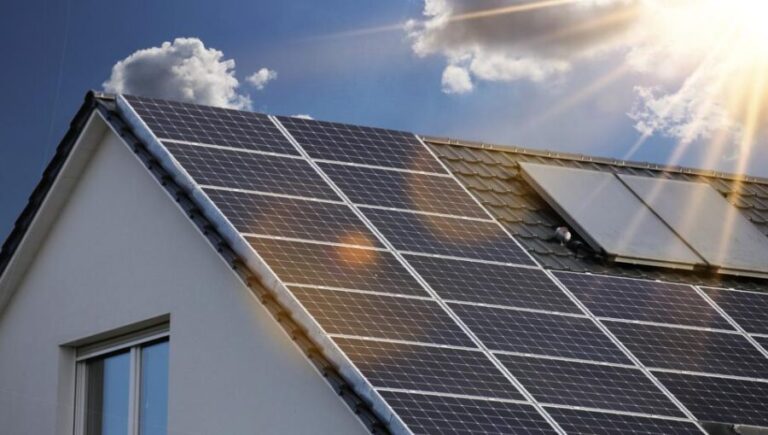
Solar Loan
Solar energy appeals to a wide audience as it’s economically sensible and eco-friendly as well. Depending on how many solar panels you require and which region of the country you live in, you can anticipate spending around 5,00,000 on a home solar system. Many homeowners can break a solar loan even in seven to eight years.
What is Solar Loan”
The main similarity between a solar loan and a home renovation loan is that both involve the homeowner borrowing money from a lender—either a bank or a solar company—and then paying it back over time with an interest in the form of regular installments. These enable homes to finance the entire system while going solar with no down payment.
Things you should know about the solar loan?
Some lenders provide loans specifically for solar-related costs. There are, however, many additional ways to finance your solar system. Loans that are secured often have lower solar loan interest rates than loans that are not. Loans under the Residential Property Assessed Clean Energy Program (R-PACE) let you tether your debt to your residence.
You might be able to utilize a green mortgage to pay for a solar system if you’re purchasing a new home.
Even green refinances are available from some lenders, which can be advantageous if they allow you to refinance for a lower solar loan rate. Visit the Database of State Incentives for Renewables & Efficiency to see what credit programs are offered in your neighborhood.
Should you opt out of a solar loan?
There are numerous benefits to getting a solar loan so you can afford it today, if you can’t afford to pay for a solar system in cash and many of us can’t. Having said that, not everyone should go for it.
Because the cost of new technology is quite high, it would be feasible for many of us to sign up for a solar loan and break the payment procedure down into several monthly tenures.
What are the benefits?
Cutbacks in Operating Costs —-
The electric bill for your company might be decreased or eliminated with a rooftop solar power installation. You become less reliant on the power from the utility provider when you generate your electricity. As a result, your energy bill will drop right away.
The prevention of fluctuating utility rates —-
The cost of energy increases as non-renewable resources become more scarce and the demand for energy increases. Unanticipated situations can result in abrupt, short-term increases in energy prices. Your susceptibility to rising electricity prices might be decreased or eliminated by installing a rooftop solar power system.
Make Your Business Green —-
Your company will use less fossil fuel while producing power from solar energy, which reduces pollution and greenhouse gas emissions. Your business helps battle climate change and lessen our nation’s reliance on foreign energy sources by making the move to solar energy.
Investment Returns —-
Businesses continue to find solar electricity to be a reliable investment that produces both immediate returns and long-term savings. You can buy a rooftop solar energy system and pay it off over time with a rooftop solar panel loan. You fully own the system, which may enable you to take advantage of tax perks. By 2023, India intends to have 100GW, including 40GW of rooftop solar.
How to get a solar loan in India?
Ever applied for a car loan? Well it’s similar to that.
You must submit an application for the funds and a plan for your solar power plant. Additionally, you will need to provide some basic documentation, like your electricity bills for the previous six months. Before beginning the procedure, the affiliated solar loan Bank will check your eligibility and credit rating.
Affiliated Bank would pay up to 75% of the total cost of the solar plant after the loan is authorized. The client will make a down payment of 25%.
An Equated Monthly Instalment or solar loan EMI will be chosen based on the loan’s maturity period. The total amount due plus the interest incurred is included in this EMI. The compensation would be smaller if the tenure was longer.
We advise picking a shorter EMI tenure because it results in better savings even though the decision can be based on your ability to pay.
How to choose a particular provider for your Solar Loan?
Through a partnership with an affiliated bank, your loan provider must be serving residential and commercial customers the chance to fundraise for their solar energy system.
Make sure whether the affiliated Bank is one of the top private sector banks in India with more than 1400 branches spread all over the nation.
You should obtain a loan through their Solar Loan Scheme for solar projects with a capacity ranging from 10 kW to 1 MW. Simply said, you need to put down 25% of the overall price. 75% of the remaining sum will be financed by a bank. The principal sum and interest rate should depend on the affiliated Bank’s discretion.
Look out if your loan provider has done away with the tiresome step of physically going to the bank for approval and penalties to make the entire procedure easy and stress-free. Opt-out for the EMIs that are reasonable, allowing you to use the money you would have used to pay your electricity bills to the payments.
If you are interested in financing your solar installation or have any questions about the procedure, do your own research and clarify everything with your loan providers.